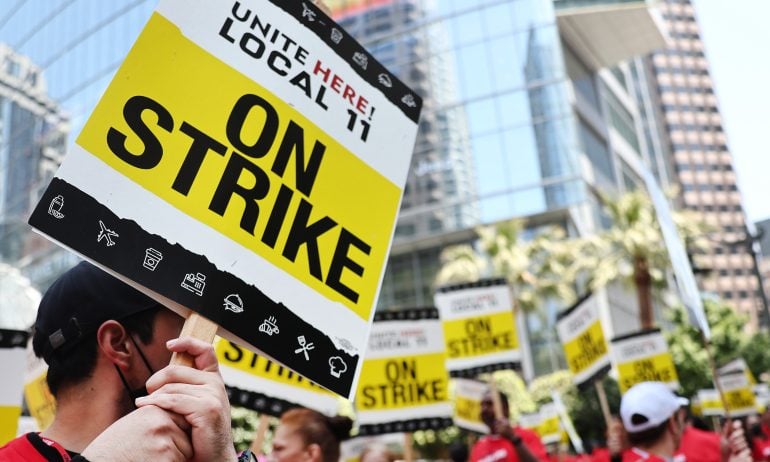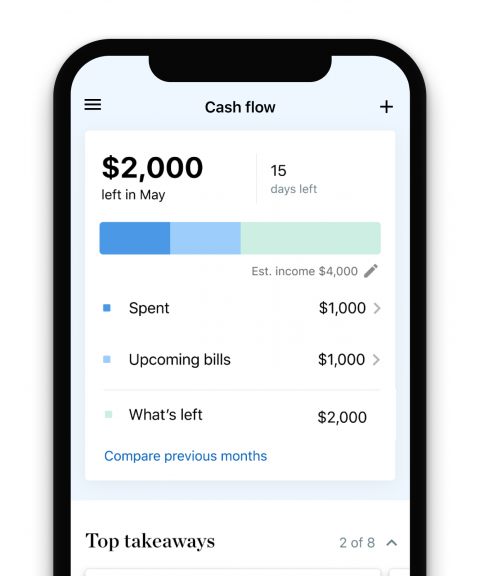Updated on July 23.
Disneyland workers. On July 22, workers at Disneyland authorized a strike. Four major unions that represent 14,000 Disney workers have been in negotiations with Disney for months. Cast members at Disneyland are represented by a group of unions including Teamsters Local 495; Bakery, Confectionery, Tobacco Workers, and Grain Millers (BCTGM) Local 83; Service Employees International Union-United Service Workers West (SEIU-USWW); and United Food and Commercial Workers (UFCW) Local 324. And additional union activity among “cast members” at Disney has been growing: On May 18, some 1,700 cast members at Disneyland Resort voted to unionize with the Actors’ Equity Association.
United Airlines flight attendants. The Association of Flight Attendants - CWA (AFA), which represented some 28,000 workers, is planning to vote to authorize a strike unless a new contract is reached with United Airlines. The vote will take place from Aug. 1 to Aug. 28.
Boeing workers. On July 17, the largest union of Boeing employees voted affirmatively to authorize a strike against the company unless a new contract is reached. The International Association of Machinists and Aerospace Workers District 751, which represents 32,000 workers, are asking for a 40% pay increase and a restored pension plan. Since the beginning of the year, Boeing has been embroiled in scandal and federal investigations of the company’s operations and safety of its vessels.
As of July 23, there have been 178 labor actions in the U.S. in 238 locations in 2024, according to the Cornell University School of Industrial and Labor Relations (ILR) Labor Action Tracker.
Going on strike means workers withhold labor from their employer in order to gain leverage to bargain for things like higher compensation and benefits, more protections, as well as improved working conditions. Workers don’t have to be part of a union to strike, but unions often organize and authorize strikes, as well as represent workers in negotiations.
» MORE: What is a strike?

More strikes are expected in the days to come. Here are some of the new and ongoing major strikes happening right now in the U.S.
Graduate student worker strikes in 2024
» MORE: How to survive a strike
Recent strikes in the U.S.
Striking worker totals increased by 141% in 2023
Strike activity has spiked over the last couple of years: Work stoppages increased 50% in 2022 compared to 2021, the IRL analysis of 2022 data shows. The uptick was smaller from 2022 to 2023 — a 9% increase — but the number of workers in work stoppages increased by 141% during that period.
The increase was mainly due to four large strikes that accounted for 65% of all workers who went on strike last year. The biggest strikes were held by SAG-AFTRA, the Coalition of Kaiser Permanente Unions, Los Angeles Unified School District workers and the UAW.
Here are some of the key findings from the 2023 Labor Action Report from ILR.
Work stoppage totals: There were 470 work stoppages in 2023, including 466 strikes and four lockouts. In total, approximately 539,000 workers were involved in these work stoppages. Work stoppages increased by 9% from 2022 to 2023.
Workers involved: The number of workers involved in work stoppages increased by 141% from 2022 to 2023.
Workers' top demands: The report found workers were demanding “better pay, improved health and safety and increased staffing.”
How long work stoppages lasted: Most work stoppages lasted a short period of time. 62% lasted fewer than five days.
How many nonunion workers organized strikes: Nonunion workers organized 22% of all strikes in 2023 compared to 31% in 2022.
The industry that dominated strikes: The majority of work stoppages in 2023 were in the accommodation and food services industry — about one-third of all stoppages. But these stoppages account for only 6% of total workers involved in stoppages for the year. The majority of accommodation and food services workers were led by Starbucks Workers United — an organizing effort to unionize Starbucks locations — or the Fight for $15 campaign — an organizing effort to unionize underpaid workers and secure a $15 minimum wage.
Other industries that went on strike: Work stoppages were evenly dispersed across other industries outside of food services compared to 2022. The industries with the highest number of work stoppages included information, health care and social assistance, as well as educational services.
(Photo by Mario Tama/Getty Images News via Getty Images)



